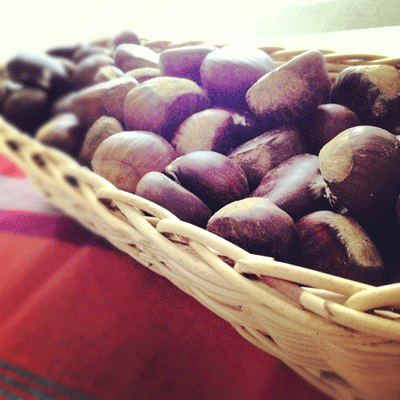Chestnuts history and roasting tips
Chestnuts roasting on an open fire bring us visions of simpler times when people had more time to sit with family and friends to enjoy a special treat, bring back those times this holiday season.
Fresh chestnuts have a long history of being a fall, winter and holiday delicacy. American chestnut trees once covered over 200 million acres in the United States, but then destruction came.
A destructive fungus was first identified in 1904. Chestnut blight quickly consumed America’s forests. The fungus was probably introduced by an unnoticed hitchhiker, imported on Japanese chestnut trees. In less than 50 years chestnut blight eliminated 3.5 billion of an estimated four billion trees in the United States.
The American Chestnut Foundation was founded in 1983 by plant scientists. Their vision is to restore the American chestnut to its native habitat in the United States and is being accomplished through a breeding program and other foundation activities.
There is renewed interest in chestnuts but most people don’t know much about them since they have been scarce. Michigan State University Extension has the following tips regarding chestnuts:
- Chestnuts are perishable, so look closely when purchasing them. Chestnuts should have a shiny brown exterior without any blemishes. It is very important that they be firm and not soft.
- Keep chestnuts refrigerated until you are ready to use them or they will dry out. If molding occurs on the chestnuts in the refrigerator, wash and/or scrub the nuts to remove the mold and place them on paper toweling. After one or two paper changes, allow them to room-dry for several hours. After drying, replace the nuts in a paper sack in the refrigerator until they are chilled, then transfer them to a clean plastic bag with holes punched in it. If mold persists, the kernel may become "off-colored" and no longer edible. If mold has been present, any bad kernels can be spotted by cutting the nuts in half before cooking.
- The most popular method of cooking chestnuts is roasting. Do not roast a chestnut until one or two holes have been punctured into the shell. Some people prefer to make a small “X” on the flat side of the shell. If not punctured in some way, the build-up of steam pressure within the shell will cause the nut to explode with considerable noise, force and mess. When roasting chestnuts “over an open fire,” be sure to use a covered utensil with a long handle. In a conventional oven, heat the nuts for about 15 minutes at 300 degrees Fahrenheit. It may be necessary for you to experiment with the timing just a little.
- Chestnuts are done when they easily peel and the “skin” around the nut also removes easily.
- A microwave works well too. Cut the nuts in half and place cut side down on a double layer of paper towels. To start, try using eight medium-sized chestnuts and a roast setting for two minutes. Here again, some experimentation may be needed.
- Steaming is great for chestnuts that have dried too much. Cut the chestnuts in half, then steam eight to 10 minutes. Drain, cool and remove any kernels that have not already fallen out of the shell.
- To boil chestnuts, cut an “X” in the shell and drop them in a pan of boiling water. After dropping chestnuts in, once the water returns to a boil, boil for five minutes, turn off the heat, and then remove a few nuts at a time to peel.
Once chestnuts have been cooked and shelled, they should be stored in tightly sealed jars in the refrigerator for up to one to two months or in the freezer for up to a year.




 Print
Print Email
Email


